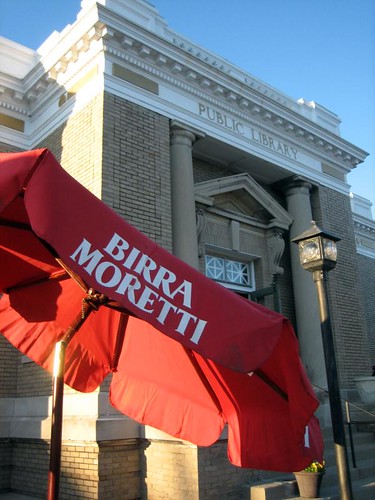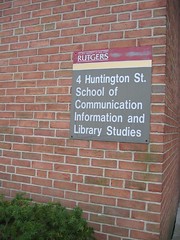 Image:Alex McDowell Lecture at Ohio State University (Bryan Loar)
Image:Alex McDowell Lecture at Ohio State University (Bryan Loar) Last night I had the pleasure of listening to a free talk @
the Wex by Alex McDowell. McDowell uses a technique that he call
immersive design to integrate silos of design into a more holistic union, making pre-planning (i.e. pre-production for film, digital prototyping for industrial design) more important than it has been over the last 20 years.
Here's a McDowell quote from
Wired and is what he basically said last night:
"The big premise of immersive design, whether it's videogames or architecture or animation or film, is that in each of those areas, world-building is the core idea."
Central to that notion is narrative and how that narrative "can transverse the newly permeable membrane surrounding all forms of immersive story telling, between media and across culture." [taken from the definition of immersive design below]
 Image: Immersive Design Definition (Bryan Loar)
Image: Immersive Design Definition (Bryan Loar)Digital tools such as
D-Vis and his virtual camera, which shows how a virtual space would look mapped over a real space--something akin to
augmented reality, help McDowell realize and visualize immersive spaces yet to be built.
And those Easter eggs? Well, if you're a die-hard Watchmen fan, you probably already know. Dr. Manhattan's appartment sports both a coffee table book entitle "The Man Who Fell to Earth," and a room that pay homage to the
movie of the same title with a ping-pong table, astroturf, wallpaper that mimicks a stand of trees, and leaves on the astroturf. There are some great pictures of this stuff posted by Meredith Woerner
here.
One other quick note...check out
Death and the Powers which McDowell is lending a hand to. The main protagonist of the opera leaves his body behind and becomes part of the set design, i.e. the System. Themes of loss, morality, and others that surround some "ghost in the machine" thinking are prevelant. However, most striking will be the use of a robotic, musical "chandelier" that the protagonist will communicate through.
If you liked this post, check out my other post on
Bruce Mau from the same OSU Glimcher Lecture series.

























